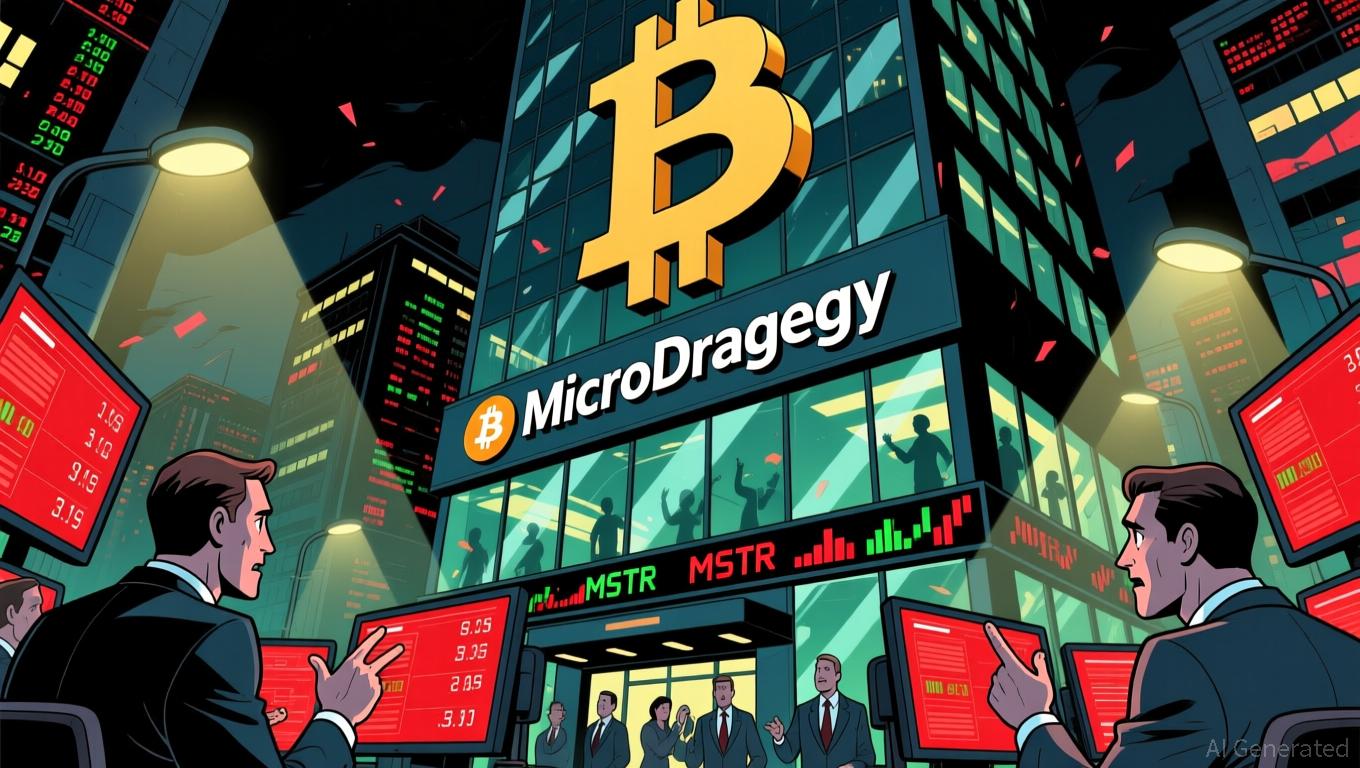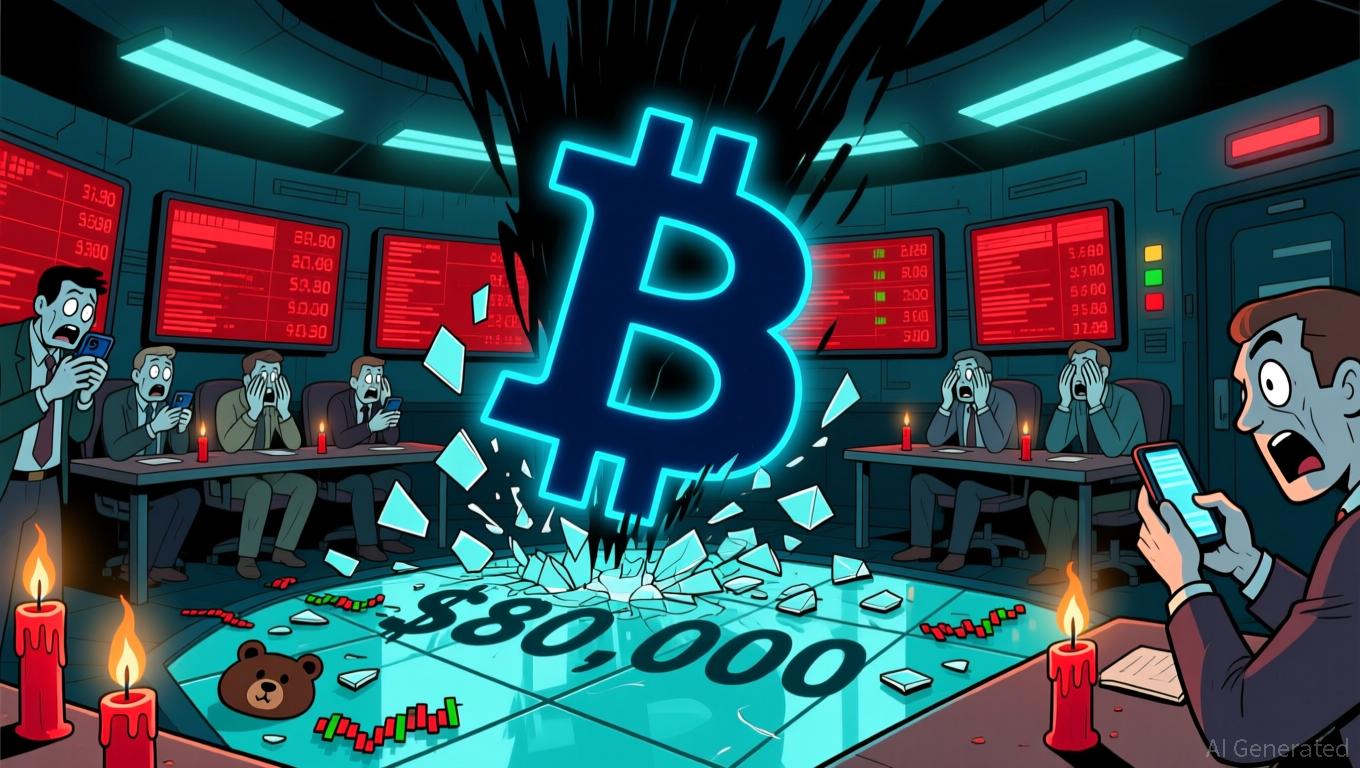MMT Faces a 2025 Crossroads: Pursue Green Innovation or Risk an Inflation Surge?
- MMT 2025 debate intensifies as governments use it for green/social investments amid inflation risks. - Central banks cautiously adjust policies, balancing MMT-driven spending with inflation control. - Investors face MMT-driven opportunities in green sectors but risk abrupt policy shifts and inflationary shocks. - Experimental green policies test sustainability goals without destabilizing inflation, but long-term efficacy remains unproven.
The MMT Framework: Benefits and Drawbacks
The central idea of MMT—that governments issuing their own currency can spend as needed if inflation is under control—has gained momentum in 2025, especially in the United States, where government spending has counteracted tighter monetary policy to stave off economic downturns
Central banks have responded with prudence. The Federal Reserve reduced interest rates by 25 basis points in October 2025 but
Sustainability vs. Inflation: The Central Bank Challenge
In 2025, central banks are increasingly required to balance fiscal expansion inspired by MMT with environmental and sustainability objectives. The Federal Open Market Committee (FOMC) has
Yet, this dual focus is not without conflict. Disruptions in supply chains and fluctuations in energy markets caused by climate change may drive inflation higher,
Investor Implications: Managing the MMT Puzzle
For investors, the environment shaped by MMT brings both promise and peril. On one side, government spending focused on green infrastructure and social programs could drive long-term growth in areas like renewable energy and sustainable farming. U.S. Global Investors (GROW), for example, recommends allocating 10% of portfolios to gold as a safeguard against inflation, while also
Conversely, the threat of sudden policy reversals is significant. Economists from major institutions caution that postponing fiscal tightening—often due to political considerations—could lead to abrupt corrections in financial and credit markets
Conclusion: Striking a Fragile Balance
The impact of MMT on markets in 2025 highlights the ongoing struggle between fostering innovation and maintaining stability. While the approach offers flexibility for essential investments in sustainability and social justice, its dependence on delayed inflation data and politically influenced policy cycles brings considerable risk. For now, central banks are proceeding cautiously, putting price stability ahead of unchecked fiscal expansion. Investors must navigate this landscape by preparing for both inflation shocks and the opportunities presented by the green transition—requiring both adaptability and a deep understanding of MMT’s shifting place in the global economy.
Disclaimer: The content of this article solely reflects the author's opinion and does not represent the platform in any capacity. This article is not intended to serve as a reference for making investment decisions.
You may also like
Bitcoin News Update: MSTR's Business Role Under Scrutiny as MSCI Considers $8.8B Removal
- MSCI's proposed exclusion of MicroStrategy from global indices could trigger up to $8.8B in outflows due to its 50%+ bitcoin asset allocation. - JPMorgan warns the removal would damage MSTR's liquidity and capital-raising ability, with shares down 67% since November 2024. - CEO Michael Saylor defends MSTR's operational identity, rejecting "passive bitcoin fund" claims while adding $835M in crypto holdings. - MSCI's Jan. 15 decision could disrupt index-linked investor exposure to bitcoin, with MSTR shares

Bitcoin News Update: Institutions Acquire Crypto Shares Amid Rising Bearish Bets on Bitcoin
- Bitcoin's $80,000 put options dominate trading with $2B open interest, signaling sharp bearish reversal after its worst monthly drop since 2022. - ETF outflows accelerated declines, with $3.8B November redemptions, while Ark Invest added $38.7M in crypto equities amid market fragmentation. - Analysts warn leveraged losses ($19B in October) and forced liquidations amplify downturn, with Citi noting critical support at $80,000. - Market remains divided: Binance calls pullback "healthy," while Peter Brandt

Hyperliquid News Today: Speculation Drives Meme Coin Rally Despite Regulatory Alerts
- Meme coins surged on Nov 24, 2025, with PIPPIN rising 80% in 2 hours to $0.053 and $53.15M market cap. - BANANA (+20%) and TNSR (+50%) joined the frenzy, reflecting speculative flows shifting to high-risk assets amid Bitcoin stabilization. - Perpetual DEX protocols hit $4.24M daily revenue while Fed rate-cut expectations and token unlocks fueled volatility. - Regulators warned of risks as India exposed an AI-generated deepfake fraud, highlighting sector instability and regulatory scrutiny. - Analysts cau

Bitcoin News Today: JPMorgan’s Alert Ignites Discussion: Does MicroStrategy Serve as a Stand-In for Bitcoin or Function as a Business Entity?
- JPMorgan warns MSCI's potential exclusion of crypto treasury firms like MicroStrategy could trigger $8.8B in passive outflows, sparking market debates over corporate classification. - MicroStrategy CEO Michael Saylor rejects criticism, emphasizing the firm's "Bitcoin-backed operating" model with $500M software revenue and 649,870 BTC holdings. - Bitcoin's $81,500 slump and 23% Coinbase drop highlight institutional unease, while MSTR stock absorbs hedging pressure as crypto investors' proxy. - Analysts sp